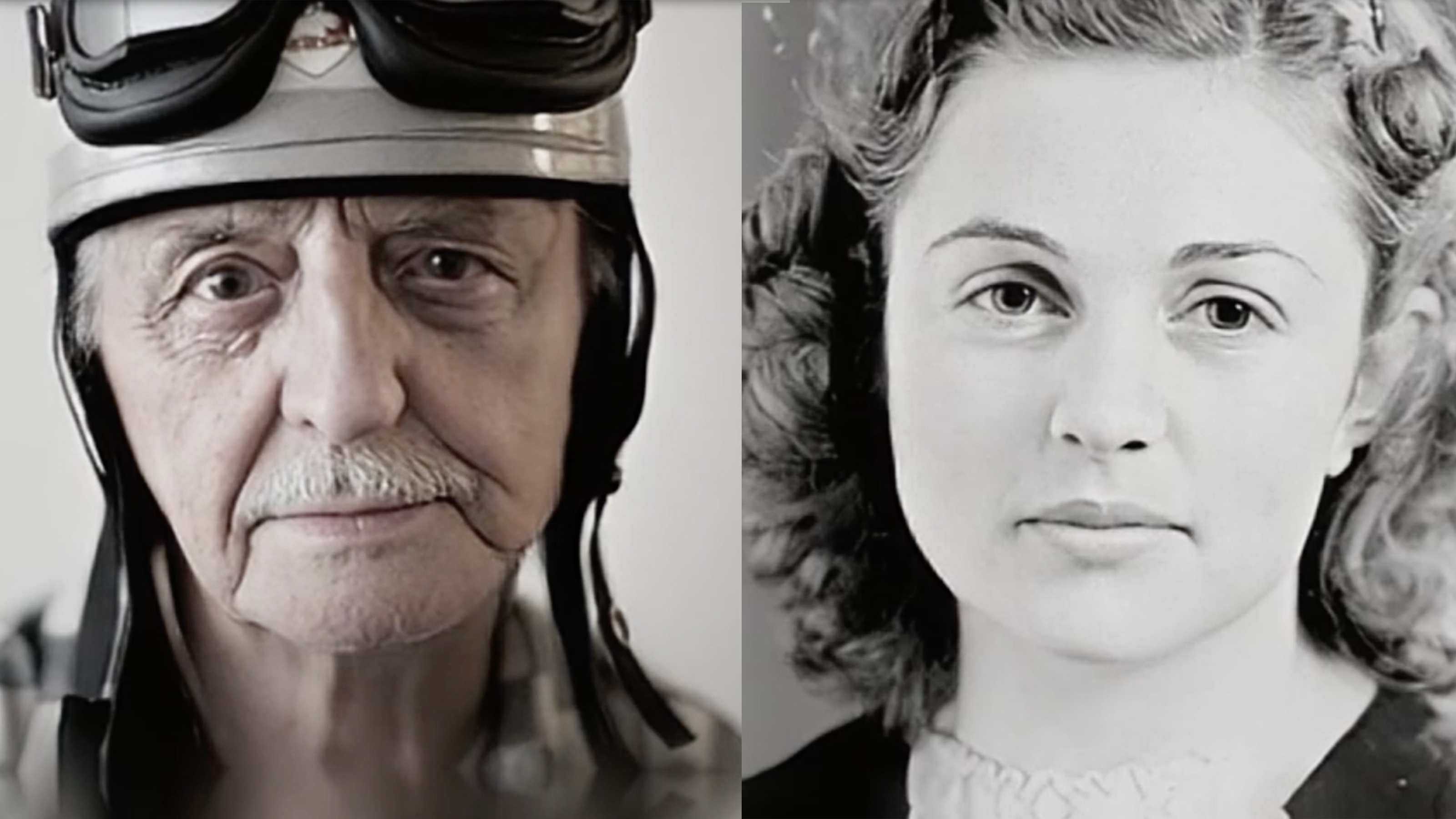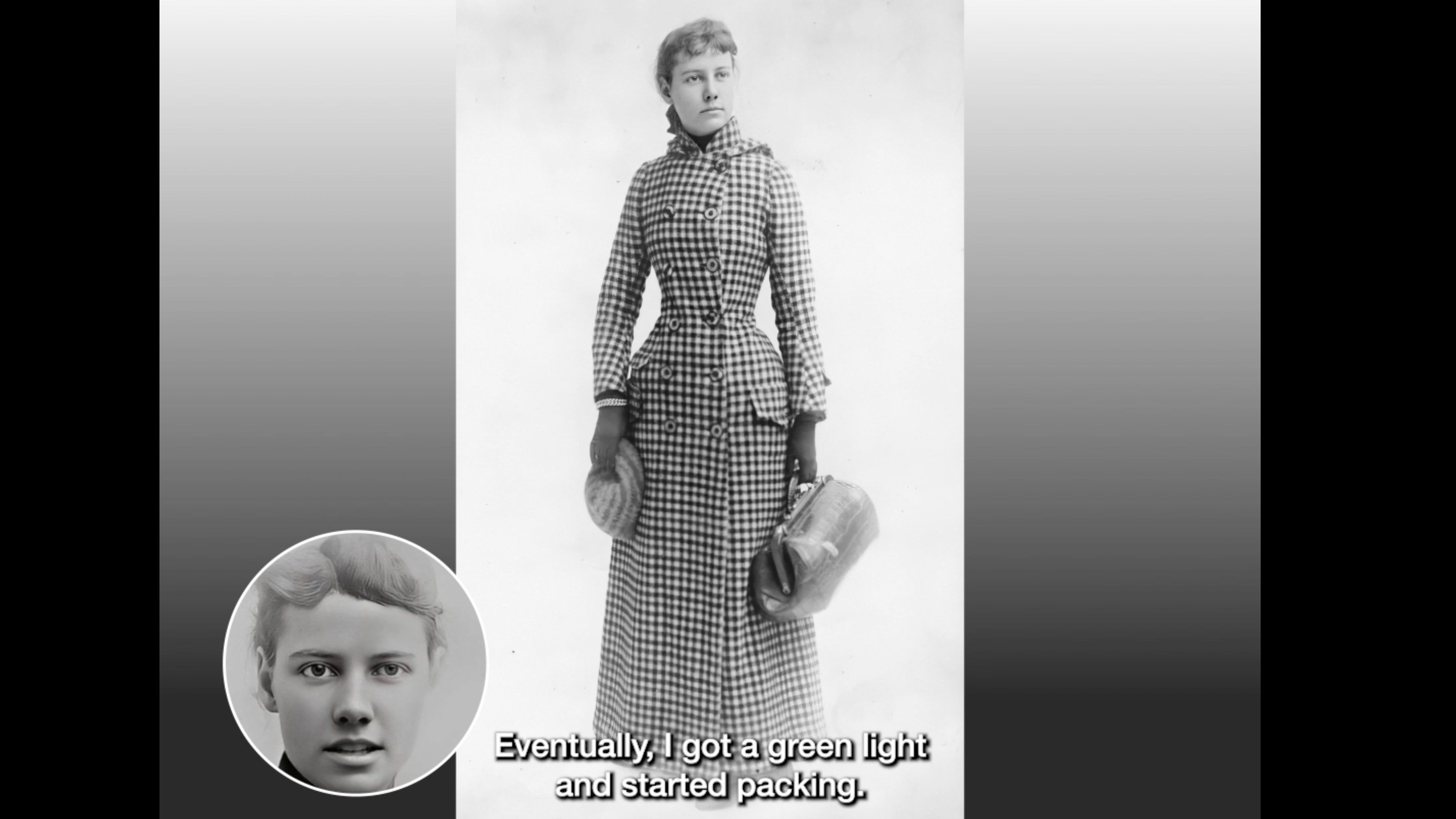This creepy AI tech can now turn your ancestor's photos into a mini biopic
Does LiveStory take AI photo tech a step too far?

This time last year, social media was ablaze with MyHeritage's viral 'Deep Nostalgia' tech, whose AI wizardry animated our old family photos with disturbing realism. Well, if you were freaked out by that, wait till you see the new feature it's just launched called LiveStory.
This time, the online genealogy company's tech doesn't just create a little 10-20 clip based on an old photo of your relative. Instead, LiveStory goes further by creating a longer animated video of your ancestor telling their entire life story, complete with lip-synced audio and a slideshow of old photos.
Like before, it works by using AI-powered 're-enactment' technology that animates a photo of your relative's face. But this time you also get audio that's either created automatically from a MyHeritage family tree or entered manually by you. Text-to-speech tech then brings the story to life and the audio is synced with the animated talking head of your relative.

Like last year's 'Deep Nostalgia' tech, LiveStory's animations are created using a large set of 'driver videos'. Once the service's algorithms have analyzed the photo you've uploaded, its notable features or facial 'landmarks' are then mapped onto the driver video to create an impression of movement. The algorithms also fill in any missing details. A synthetic voice generator also creates a narration based on information on the person's profile, or you can create your own text from scratch. You can also upload your own audio recording.
MyHeritage and D-ID, the Israeli company that creates and licenses the tech, say that the end result is fully customizable, giving you the ability to change the narrative, photos and voice before you send it to family or social media. LiveStory also apparently supports 31 languages, dozens of dialects, and hundreds of voice personas, along with various male and female voice options.
Despite all of that, there's no doubt that the tech is a little creepy and takes us on an even bigger trip to the uncanny valley. For some, the addition of audio may well take things too far, and MyHeritage has had to add some disclaimers to ensure the tech isn't abused. It says that LiveStory is "intended to be used only on photos of deceased people, typically one’s own ancestors" and that it "should never be used on a photo of a living person without their permission".
Still, many on social media found last year's 'Deep Nostalgia' tech to be a comforting or even heart-warming way to virtually 'meet' relations they'd never seen in real life. And like that feature, LiveStory is currently free to try out on desktop, mobile web (both via the MyHeritage site) and in the MyHeritage mobile app. You can create several LiveStories for free, but after that you'll need to pay for a subscription (from $119 / £89 per year).
Analysis: A bolder step into the uncanny valley

Just like last year's 'Deep Nostalgia', we're a little torn about MyHeritage's new 'LiveStory' feature. There's no doubt that the tech is fascinating, and the fact that it can automatically create a 90-second video biography from a photo, family tree, and some text is both impressive and terrifying.
Sign up for breaking news, reviews, opinion, top tech deals, and more.
Yet we can't help but feel a large part of the tech's previous viral success (which resulted in 100 million animations) was down to its subtlety. The animated faces produced by 'Deep Nostalgia' occasionally blinked or tilted their heads, but that was it – and this restraint helped create an illusion while masking the tech's limitations.
The addition of audio is a logical step, and we've no doubt it'll prove a popular tool for those who don't get the shivers from its undeniable creep factor. But from the examples we've seen so far, the intonation is occasionally robotic and the fact that the voice isn't sampled from the original person makes it a little too artificial.
Right now, it feels like LiveStory is a little more suited to museums or education, where its ability to bring historical figures (rather than personal relations) to life could prove to be a useful way to make history more engaging for visitors and children.
Of course, there's also the potential for misuse, although D-ID (the maker of the tech) has created some guardrails to prevent this from happening. All users need to accept terms, including a promise that they won't use it on living people, before they can make a LiveStory. There's also a text moderation algorithm on board to check for offensive, defamatory or false information, although it's not clear how the latter is verified.
When we spoke to D-ID last year in an exclusive interview, we came away impressed with its commitment to making sure its AI tech isn't used in nefarious ways, if also slightly disturbed by its prediction that the majority of the visual media we see on the internet will be synthetic "in 5-10 years." LiveStory is clearly another step on that path, if one that might not be quite the viral smash that 'Deep Nostalgia' was last year.

Mark is TechRadar's Senior news editor. Having worked in tech journalism for a ludicrous 17 years, Mark is now attempting to break the world record for the number of camera bags hoarded by one person. He was previously Cameras Editor at both TechRadar and Trusted Reviews, Acting editor on Stuff.tv, as well as Features editor and Reviews editor on Stuff magazine. As a freelancer, he's contributed to titles including The Sunday Times, FourFourTwo and Arena. And in a former life, he also won The Daily Telegraph's Young Sportswriter of the Year. But that was before he discovered the strange joys of getting up at 4am for a photo shoot in London's Square Mile.